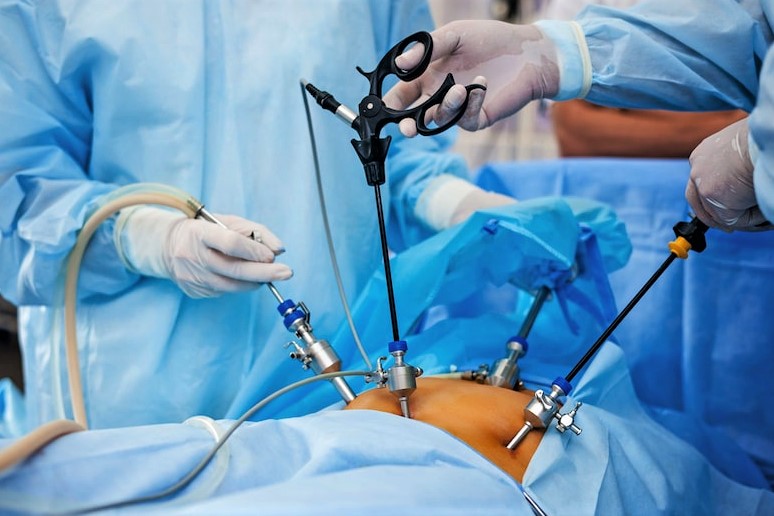
What is aortobifemoral bypass? An overview
Aortobifemoral bypass is a form of vascular bypass surgery that surgeons perform in the abdomen
The surgery essentially creates a new pathway (bypass) for blood flow so that blood reaches those places in the lower limbs that were previously excluded by restrictions or blockages in the arteries.
A vascular surgeon inserts an artificial blood vessel (graft) into the belly in the area of the diseased arteries.The graft typically consists of polyester.The graft is shaped like an upside-down letter ‘Y’. The upper part of the graft connects with the lower part of the aorta in the belly. Each stem of the Y connects to each of your femoral arteries.
Aortobifemoral bypass surgery treats severe aortoiliac occlusive disease
With this condition, plaque gradually accumulates in the major arteries of the belly and pelvis.
These are your:
- Abdominal aorta, or the lower part of the aorta that extends downwards through the belly.
- Iliac arteries, or the arteries that begin at the base of the abdominal aorta (near the navel). Your two external iliac arteries (one on each side of your body) travel to your groin, where they become your femoral arteries.
The large accumulation of plaque can restrict or block blood flow in the abdominal aorta and the iliac arteries.
As a result, your lower body (including your legs, feet and pelvic organs) cannot receive enough oxygen-rich blood.
Severe narrowing or blockages can lead to complications, including:
- Pain in the legs when walking (intermittent claudication).
- Severe leg pain at rest.
- Gangrene.
- Amputation.
Although bypass surgery cannot cure aortoiliac occlusive disease, it can alleviate the symptoms by providing blood flow to the legs.This will reduce the occurrence of the above-mentioned complications.
How invasive is aortobifemoral bypass?
Aortobifemoral bypass is an open surgical procedure that requires a large incision in the belly.
Health professionals consider this major surgery.
A minimally invasive alternative is aortoiliac stenting with bifurcation reconstruction (AISBR).
This is a form of endovascular surgery that inserts a stent inside blocked arteries to open them up and improve blood flow.
Traditionally, surgeons used AISBR for people with a higher surgical risk
But thanks to advances in technology, surgeons today use AISBR much more often instead of open surgery.
What happens during aortobifemoral bypass surgery?
To redirect the blood flow in your belly, your surgical team will perform the following steps:
- Give you general anaesthesia to put you into a deep sleep.
- He makes a long incision (cut) in your belly (laparotomy). The incision allows the surgeon to access the aorta.
- He makes an incision in the upper part of each thigh to access the femoral arteries.
- He inserts your graft. Your surgeon will sew the upper part of the graft to the aorta, over the blocked or narrowed part. They will sew the two lower parts of the graft to your femoral arteries, below the blocked or narrowed part.
- They close the incisions in your belly and upper thighs with staples or stitches.
How long does aortobifemoral bypass surgery last?
You can expect the surgery to take between two and six hours.
What happens after this procedure?
You will spend four to seven days in hospital recovering.
During this time, your care team:
- Closely monitor for signs of complications, including infection.
- Check the blood flow in your legs.
- Help you gradually walk more each day.
- Give painkillers if necessary.
What are the benefits of this surgery?
Aortobifemoral bypass surgery can help relieve symptoms and reduce the risk of complications from aortoiliac occlusive disease.
This surgery offers the following benefits after recovery:
- You will no longer have leg pain while at rest.
- You will have less leg pain related to blood flow while walking, allowing you to cover greater distances than before.
- You should have the ability to heal wounds in your legs and feet to prevent gangrene.
Approximately 80% to 95% of surgeries successfully improve blood flow for at least five years.
The 10-year success rate ranges from 74% to 86%.
Read Also
Emergency Live Even More…Live: Download The New Free App Of Your Newspaper For IOS And Android
Aortic Valve Surgery: An Overview
Aorta Surgery: What It Is, When It Is Essential
Abdominal Aortic Aneurysm: Symptoms, Evaluation And Treatment
Coronary Artery Bypass Surgery: What It Is And When To Use It
Do You Have To Face Surgery? Post-Surgery Complications
What Is Aortic Regurgitation? An Overview
Diseases Of The Valves Of The Heart: Aortic Stenosis
Interventricular Septal Defect: What It Is, Causes, Symptoms, Diagnosis, And Treatment
Heart Disease: The Atrial Septal Defect
Interventricular Defect: Classification, Symptoms, Diagnosis And Treatment
Arrhythmias: The Alterations Of The Heart
Identifying Tachycardias: What It Is, What It Causes And How To Intervene On A Tachycardia
Cardiac Rhythm Disturbance Emergencies: The Experience Of US Rescuers
Cardiomyopathies: Definition, Causes, Symptoms, Diagnosis And Treatment
How To Use An AED On A Child And An Infant: The Paediatric Defibrillator


